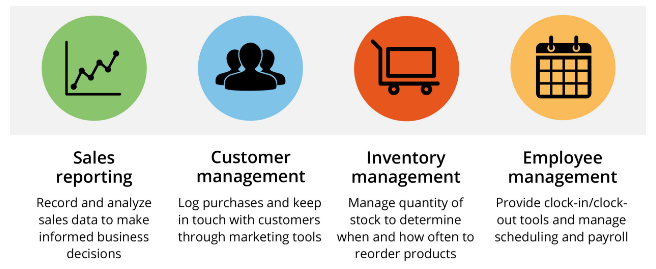
A point of sale system is a combination of software and hardware that allows merchants to take transactions and simplify key day-to-day business operations.

As business owner investor today they need to know where his foot are their own business. More over people are do not care of about sales and investment in small business. Our research the family business most are not computerized, because they believe own people. But today we are all busy in small chip has your hand smart device, you can track your phone calls, messages, email and social media, but if you are business you do not have any apps regarding to track your business sales and reports.
Overall all discussion we need today either your business is small or large, because the point of sales system even sales transactions and your more easy to understand your supplier relationship with you. The supplier provide to you products and you are retailer but in your store move fast items and slow items are both available each time. But POS system give you awareness about relationship with your supplier and supplier products.
The POS is important to each business categories even if you are saloon running professionally you required POS system because of your services are available.
Software and Hardware Components of POS Systems
As we look at the components of POS systems, it’s first important to understand the software options available and what each requires.
Software Components
There are two common software deployment methods:
On-premise: A traditional software model. Purchase one or more licenses upfront for the software and install it on your computer system or servers. You’re in charge of updating and maintaining the software, which may require dedicated IT personnel for larger organizations.
Cloud-based: Also known as Software-as-a-Service (SaaS) POS solutions. You access and support the system via the internet. Don’t worry—if your internet goes down, most systems track sales and sync them once you’re back online.
Experts Say !
“Flexibility is key. Ensure your POS vendor works with the payment processor/gateway of your choice, so that you can control cost. If you’re already using applications important to your business, make sure the POS can integrate with them seamlessly, so that you can continue using them.”
Hardware Components
Regardless of your chosen software deployment method, the hardware is the same. Grullon says the following hardware components are crucial for supporting POS software:
Crucial POS Hardware

Register screen: Standard monitor that displays the product database. Enables other functions, such as employee clock-in and viewing sales reports. Tablets—especially iPads—are popular for replacing bulkier monitors.

Barcode scanner: Automates the checkout process. Scanning barcodes pulls product info and adds it to the checkout total. Barcodes, when scanned, may also integrate with inventory management systems to automatically adjust stock levels.

Credit card reader: Secure and EMV-compliant credit card readers are extremely important for retailers and non-compliant retailers face potentially huge losses on account of fraud liability.

Receipt printer: Email and text receipts are gaining popularity, but paper receipts are still important for providing customers with a quick snapshot of their purchase. You can print employee sales totals, hours and other information.

Cash drawer: It may fade away in the years to come, but cash is still king. And as long as it is, you need a secure place to store cash for transactions. Additionally, there are no credit card fees tied to accepting cash.
Retailers benefit greatly from the automation and organization POS hardware and software systems provide. However, it’s also important to understand how these components work together to help you overcome certain pain points.

